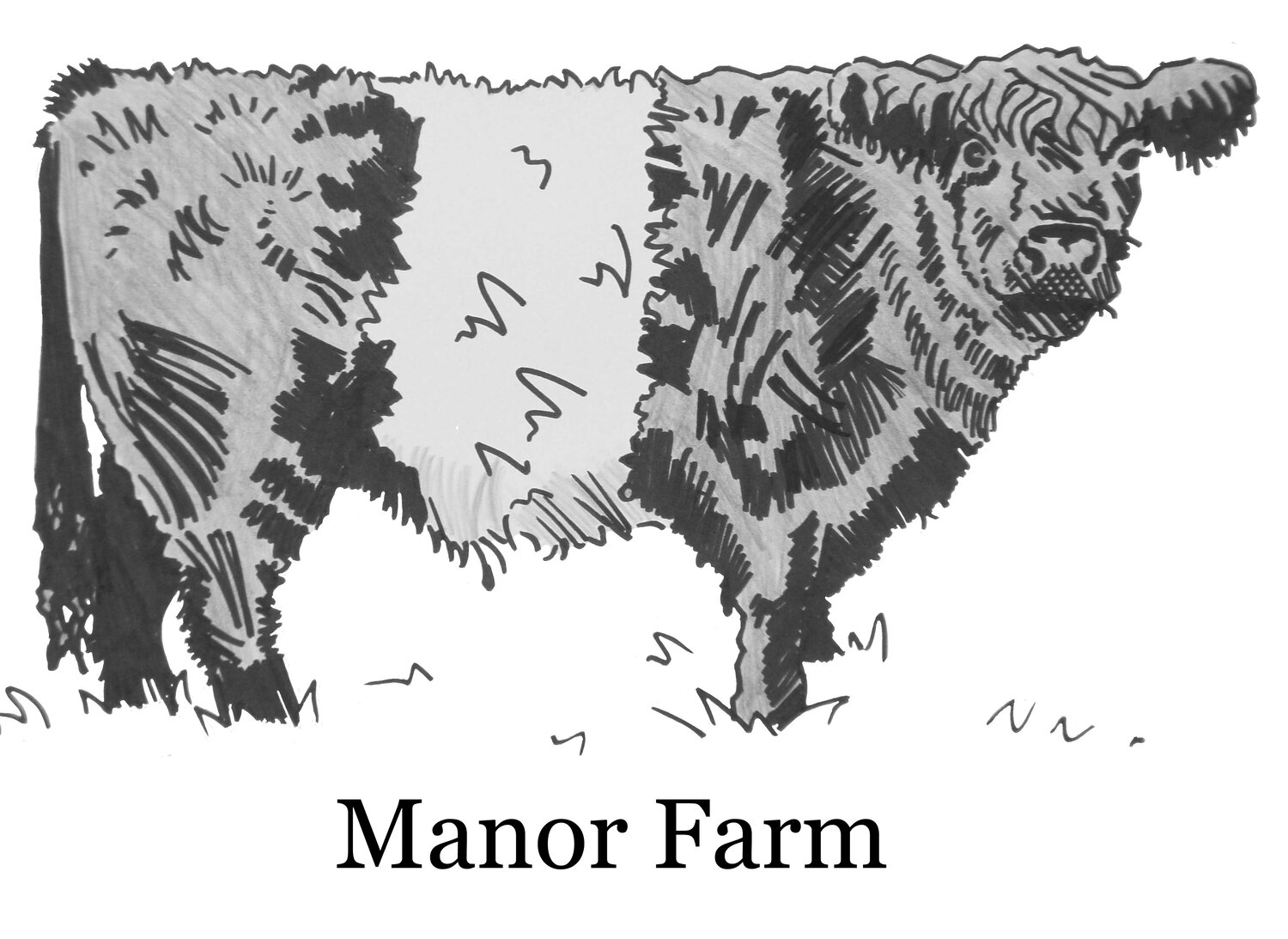
Livestock
Our Belted Galloway cattle, otherwise known as ‘Belties’ graze happily on the herb-rich species of chalk downland and natural lowland pastures as well as browsing upon leafy hedgerows and trees.
Our Belted Galloway cattle are born and bred on the farm. They are a hardy breed well suited to rough grazing, whilst producing nutritionally rich milk for their calves. Belties have a double coat to protect them from the elements, a long haired outer coat which sheds the rain and snow and a soft undercoat providing warmth.
Our Galloways are black with a characteristic white belt, which encircles the body enabling us to spot their location on the hillside when we go to check them!
They help to maintain natural lowland pasture and unique chalk downland habitats along the North Downs in Surrey and are integral to the area's environmental regeneration.
When each calf is born, it must be registered with the British Cattle Movement Service (BCMS), which issues the calf with a movement passport and unique identification number which is also displayed on ID tags in each ear.
Cattle cannot move on or off a farm holding without the passport and the BCMS keeps an account of all cattle movements; providing full traceability throughout their life.
Having started out with a handful of cows and a bull in 2006, a further 21 pedigree Belted Galloways were soon purchased and the Wotton Herd was established. Paula runs the Belted Galloway herd which has received Pasture For Life certification.
Paula and Amanda work with the vet during pregnancy diagnosis and TB testing, foot trimming, moving cattle to fresh grass and sharing the calving checks through day and night.
There are currently 140 head of Belted Galloways on the farm including 46 breeding cows, 30 replacement heifers and two pedigree bulls. The retired cows remain on the farm and undertake important conservation grazing and habitat management as part of our Higher Level Stewardship Scheme.
Laurence runs a separate beef herd, of predominantly Friesian or Friesian Cross cattle which come onto the farm as calves from local dairy farms, mostly in the autumn.
Amanda is our full time herds-person ensuring the health and well-being of the calves, with the rest of the team on hand for weighing and moving cattle, bedding up and mucking-out.
The calves are hand reared until they are weaned at six weeks, being housed in small groups in a barn. During the first weeks they wear an individual collar, which identifies them when using an automatic milk machine allowing the calves to choose when they’d like to drink some warm milk.
They remain in this friendship group as they move out to grass in spring and summer months and return to large barns in the winter for finishing.
Adult animals are weighed regularly to check their weight and conformation and ultimately to decide when they meet the requirements sought by the abattoir which is buying beef on behalf of supermarkets.
This information is stored on computer which is linked to the scales and keeps a record of each animal's weight gain.
These animals leave the farm at about 20 months at a price set by the abattoir not the farmer!






